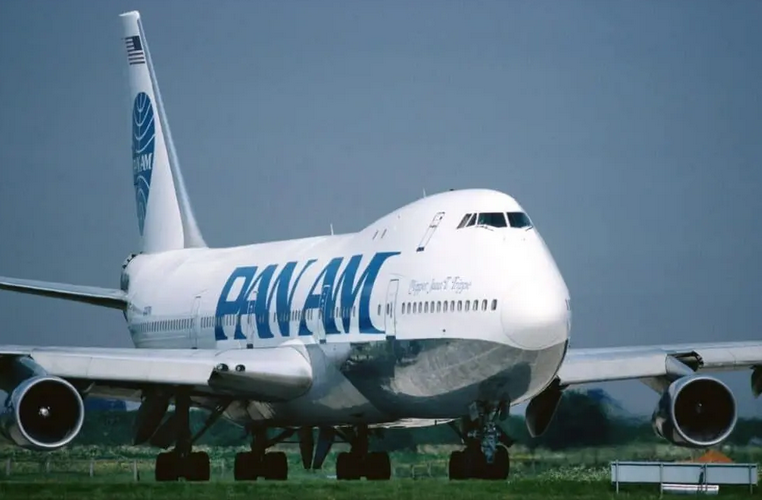Pan Am Relaunch Advances: Business Plan Filed, FAA Certification Started

Plans to revive the legendary Pan American World Airways are taking concrete shape. On October 9, aviation merchant bank AVi8 Air Capital revealed that it has completed a comprehensive business plan for restoring the airline, dormant since 1991. In conjunction with Pan American Global Holdings (which holds the Pan Am trademarks), AVi8 has formally initiated the FAA Part 121 certification process, a critical step toward reestablishing Pan Am as a scheduled U.S. carrier.
“Avi8 has assembled a world-class team to lead the certification effort and has received strong initial support from aircraft lessors and key vendors,” the company stated. The two partners announced that their collaboration began in June, during which they assessed Pan Am’s feasibility in today’s commercial aviation market.
As part of the relaunch strategy, the revived Pan Am intends to fly a fleet of Airbus aircraft and will be headquartered in Miami. Specific models and route networks, however, have not yet been disclosed.
A Legacy Brand Meets the Modern Era
Pan Am once stood at the pinnacle of American commercial aviation, especially in international service. Its decline, triggered by the oil crisis, regulatory liberalization in the 1970s, and an inability to build a robust domestic network, culminated in bankruptcy and the brand’s disappearance. Yet today the name endures—synonymous with glamorous travel and elite service, a nostalgia Pan American Global Holdings hopes will help attract customers once again.
Pan American World Airways (Pan Am), a dominant international airline from the 1930s to the 1970s, was founded in 1927 and began by flying mail and passengers between Florida and Cuba. Under Juan Trippe’s leadership, it expanded globally, pioneering transpacific and transatlantic flights with its iconic “Clippers” and introducing the jet age with the Boeing 707 and Boeing 747. After facing increased competition and financial difficulties, Pan Am acquired National Airlines to bolster its domestic presence but ultimately declared bankruptcy in 1991, though it remains a cultural symbol of luxury and the glamour of international travel.
“There has been wonderful progress since the 1980s when Pan Am, a three-class carrier, pioneered Clipper Class, the first dedicated, branded Business Class cabin. The concept rapidly caught on. When SAS advertised its EuroClass cabin, the airline’s brochure stated, ‘Work Class by day; Sleep Class by night… Most of all, you get peace and quiet. No movie. No smoking. No service (unless, of course, you insist)’. Sitting in normal seats, but with increased legroom, passengers were wrapped in duvets and ‘sleeping collars’ for the long night flights — a hitherto undreamed of level of comfort. But as they snoozed peacefully, were these aerial road warriors aware that they were, in fact, ushering in the dawn of a new age of business travel?” Excerpt From: Jennifer Coutts Clay, the author of “JETLINER CABINS: Evolution & Innovation.”
Since 1991, several attempts have been made to revive the Pan Am name, including Pan American Airways (Atlanta Hartsfield Jackson) in 2014, but none have successfully taken flight.
In today’s competitive environment, leveraging heritage is not enough. AVi8’s business plan likely includes blending the Pan Am mystique with lean operational design—modern aircraft, efficient route selection, strong vendor partnerships, and stringent cost discipline.
Challenges and Strategic Imperatives
The path to relaunching an airline is far from smooth:
- FAA Certification: Achieving Part 121 status requires extensive safety, training, operations, and maintenance approvals. It’s a lengthy, capital-intensive process.
- Fleet selection and leasing: Airbus aircraft offer operational flexibility and global support networks, but locking in competitive lease or purchase terms will be critical.
- Route strategy: The revived Pan Am must carefully choose its operational niche—international, transcontinental, or niche city-pair markets—without overextending.
- Brand vs. substance: While the Pan Am name opens doors, the airline must deliver reliability, safety, and value to avoid being viewed as a novelty.
- Competition and slot constraints: Airports are crowded, landing slots scarce, and incumbents well entrenched. Carving a differentiated route portfolio will require strategic finesse.
Looking Ahead
Key indicators now include:
- FAA Milestones: As AVi8 and Pan American Global Holdings move through audit checklists and regulatory reviews, the timing of major certification signoffs will be critical.
- Fleet announcements: Once Airbus models are chosen, order or lease commitments will signal the scale and ambition of the operation.
- Route reveals: Initial destinations—especially international markets—will show whether Pan Am intends to recapture its classic global role.
- Early partnerships: Vendor, ground services, maintenance, and alliance relationships must be established early to support launch viability.
If successful, the Pan Am revival will be one of the most symbolic turnarounds in aviation history—melding legacy with modern operational rigor. But its ultimate fate will hinge on how well it executes behind the nostalgia-laced branding.
Related News: https://airguide.info/?s=pan+american
Sources: AirGuide Business airguide.info, bing.com, airlinegeeks.com &
Excerpt From: Jennifer Coutts Clay, the author of “JETLINER CABINS: Evolution & Innovation.”
